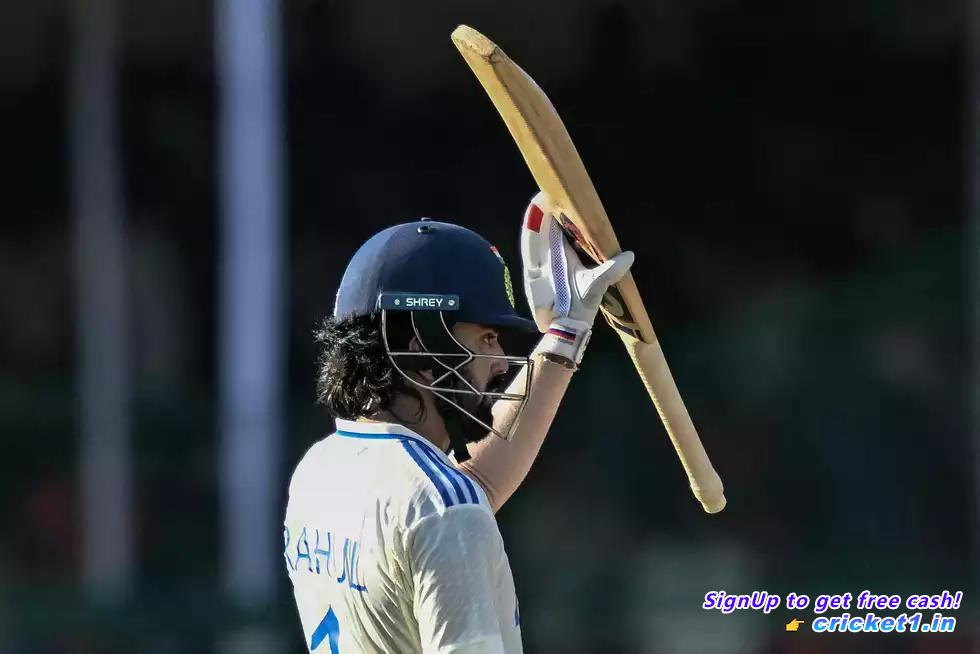
As the skies cleared for the first time at Green Park on Monday during the ongoing Test match, it was clear that Team India had embarked on an aggressive campaign to force a match result within the remaining two days of play. Every phase of the day’s proceedings was marked by India’s determined offensive, a reflection of their ambition to capitalize on the brief window of opportunity that had emerged after days of washed-out play.
The initial thirty minutes of the day’s play saw a classic cricketing strategy from India: bowlers probing the off stump line with a four-man slip cordon keenly waiting for an edge. Moments later, Mohammed Siraj disrupted Mominul Haque’s rhythm with a barrage of short deliveries, one of which was successfully hooked for boundaries, manifesting India’s intent. Rohit Sharma, exhibiting astute captaincy, positioned two short mid-wickets even when neither pace, bounce, nor turn was particularly aiding the bowlers, trying to tempt the batters into a risky shot. This strategic aggression was further exemplified in the final session when Virat Kohli and Ravindra Jadeja utilized unconventional reverse sweeps against Shakib Al Hasan’s spin.
Among the plethora of noteworthy moments in the day’s 514 balls, perhaps the most striking display of intent came when Rohit Sharma, setting a dynamic tone, fearlessly lofted Khaled Ahmed for a six. As Mehidy Hasan confessed after plays on the fourth day, Bangladesh took time to fathom India’s tactics—by that point, it had become too late. Rohit and Yashasvi Jaiswal had already unleashed their power, with each contributing two sixes and four boundaries.
Records crumbled swiftly under India’s onslaught. Fastest fifty. Fastest hundred. Fastest 150, all the way to the fastest 250 were conquered. It wasn’t Bazball—it was T20-style blitzkrieg in the red-ball format. Surpassing England’s reputed 4.57 runs per over, India smashed their way at an unprecedented 8.22.
India wasn’t interested in preserving the sanctity of Test cricket or the decorum of Green Park. They aimed to seize the fleeting chance—brought forth by the unfavorable weather in Kanpur—to advance to their third consecutive World Test Championship final. With only 35 overs played across three rain-ravaged days, Bangladesh had posted 107 for 3. Yet, on a pitch offering little to pacers and spinners alike, the task of claiming 17 more Bangladeshi wickets and chasing down a target was a formidable endeavor. However, propelled by crucial WTC points at stake, India gamely leaped into the race against time.
India’s bowling coach, Morne Morkel, shared the team’s aggressive mindset at the end of day four in Kanpur. “This morning, our game plan was clear: push for a win,” Morkel admitted. “After losing two days to rain, we knew that showing positive intent would be crucial.
. With two extended days of play left, there was ample time to achieve results, and it was important for us to demonstrate that intent. The bowlers set the tone from the very first ball, applying pressure effectively and reaping rewards.”
Morkel continued, “Even with the bat, exhibiting aggression was part of our strategy. It caught the opposing bowlers off guard as this approach was integrated into our game plan to explore ways to push forward and clinch a victory.”
Throughout the day, India’s relentless determination was palpable—from the opening delivery to the closing exchanges. India’s willingness to occasionally concede runs in pursuit of wickets and to risk losing wickets while chasing quick runs with the bat were spirited demonstrations of their commitment to risk-taking. When India wrapped up their batting innings, leading by a margin of only 52 runs, it was evident that the hosts had successfully dictated the tempo of the match.
While hoping for more effectiveness with their bowlers’ stump line, Rohit Sharma adapted with unconventional field placements, enticing risky shots from Bangladesh’s batters. As a result, both Liton Das and Shakib Al Hasan fell rapidly. However, Mominul Haque countered this threat skillfully with deft pull shots and creative sweeps. His consistent attempts to negate the short-ball strategy and accumulate runs through gaps between mid-wicket and deep square leg showcased an effective plan against India’s bowlers.
In partnership with Mehidy Hasan Miraz, Bangladesh held India at bay for nearly an hour until Jasprit Bumrah’s proficient spell ended their resistance, sparking the eventual dismissal of Bangladesh’s innings. Despite three missed catches, India’s fielding prowess shone through with Rohit’s agile one-handed catch to dismiss Litton and Siraj’s well-timed dive at long-off to send Shakib back.
Morkel reflected on India’s fielding performance, “In these tough conditions, taking the difficult catches boosts our bowlers’ spirits. The boys backed each other, seized those 50-50 opportunities, and brought palpable energy into the field—vital aspects in this match.”
India’s assertive and strategic intent considerably unnerves Bangladesh, whose misfortune was evident in some glaring fielding errors and missed opportunities, including a wasted chance to appeal for Rohit’s nicked catch early in the innings. Adding insult to injury, Bangladesh missed an opportunity to run out Virat Kohli, providing him a lifeline which he capitalized on to score rapidly thereafter.
Heading into the final day’s play, the two teams were separated by a mere 26 runs and two wickets. However, the stark difference lay in their respective intents and belief systems. India’s aggressive and constantly evolving approach promised much, while Bangladesh, as recounted by Mehidy Hasan Miraz, remained receptive to either aggression or protection.
“Winning requires substantial time,” Miraz opined. “We must reassess, perhaps contemplate a target, and attempt to capture ten more wickets. At this moment, our focus sways towards playing for safety instead of solely chasing victory. Our aim tomorrow is to bat as long as possible, and depending on the ensuing circumstances, we might entertain possible winning strategies.”
Despite India’s commanding hold over the narrative and Miraz’s cautious view, the Kanpur Test precariously balanced—almost as much in Bangladesh’s favor as India’s—poising for an enthralling conclusion.

